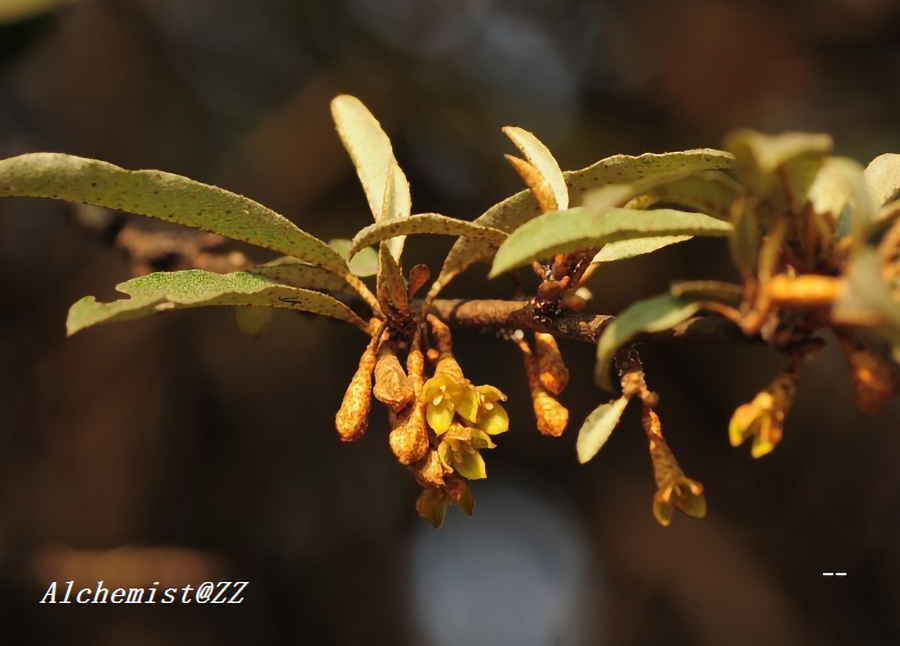- Scientific Name: Elaeagnus argyi H. Léveillé
- Ref: Repert. Spec. Nov. Regni Veg. 12: 101. 1913.
- Chinese Common Name: 佘山羊奶子 Shéshān yángnǎizi, 佘山胡颓子 Shéshān hútuízǐ
- Family: Elaeagnaceae
- Genus: Elaeagnus
- Distribution: Forests, also cultivated; 100-300 m. Anhui, Hubei, Hunan, Jiangsu, Jiangxi, Zhejiang.
Shrubs, deciduous or evergreen, erect, 2-3 m tall. Spines usually present; young branches light green, with dense yellowish white scales. Petiole yellowish brown, 5-7 mm; leaf blade dimorphic by season; spring leaves small, leaf blade elliptic to oblong, 1-4 × 0.8-2 cm, thinly papery or membranous, base obtuse, margin entire, apex rounded or obtuse; autumn leaves larger, leaf blade oblong-obovate or broadly elliptic, 6-10 × 3-5 cm, abaxially white with brown dots, scales overlapping, mostly white, a few brown, margin fimbriate-lacerate to ± stellate, adaxially tomentose when young, indumentum of stellate hairs, not appressed, lateral veins 8-10 per side of midrib, deeply impressed adaxially in old leaves. Flowers often 5-7 in a fascicle at base of new growing branches. Pedicel ca. 3 mm, slender; fruiting pedicel 8-10 mm, slender. Flowers yellow, thick, with silvery and light yellow scales. Calyx tube funnelform-tubular, 5.5-6 mm; lobes ovate-triangular, ca. 2 mm, inside with sparse short villi, apex acute. Filaments very short; anthers ellipsoid, ca. 1.2 mm. Style erect, glabrous. Drupe red when ripe, obovoid-oblong, 1.3-1.5 × ca. 0.6 cm, densely silvery scaly. Fl. Jan-Mar, fr. Apr-May. (Flora of China)
